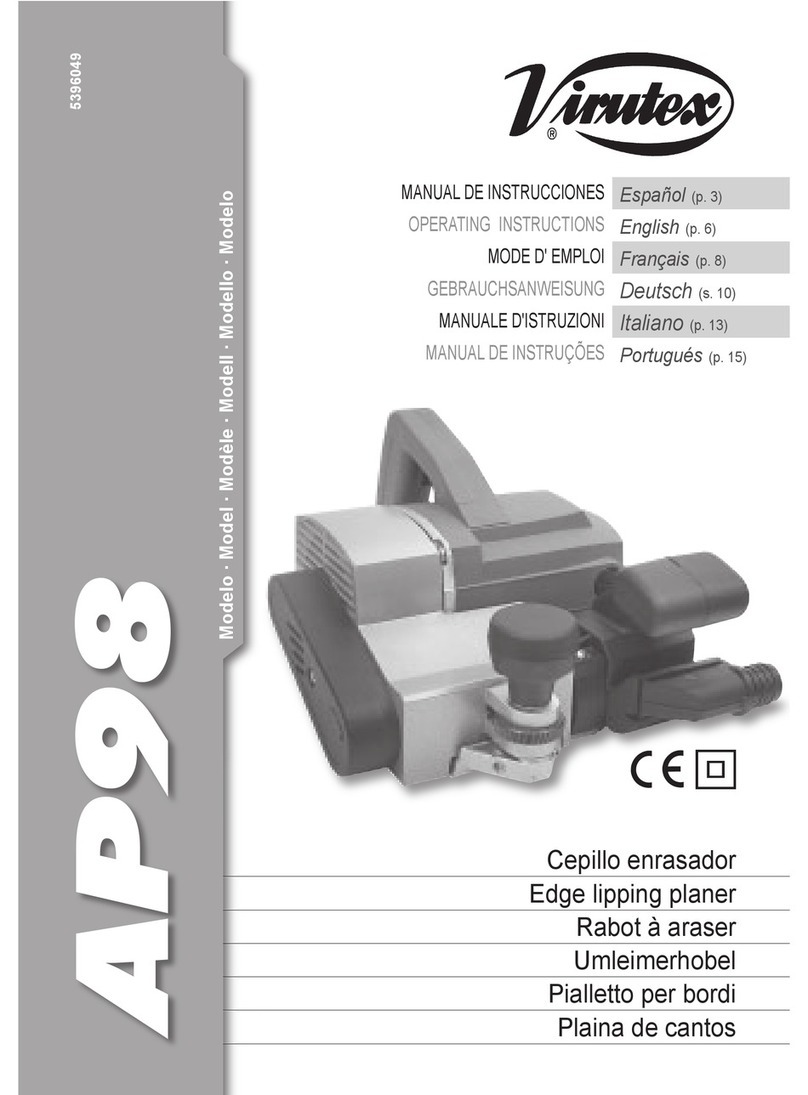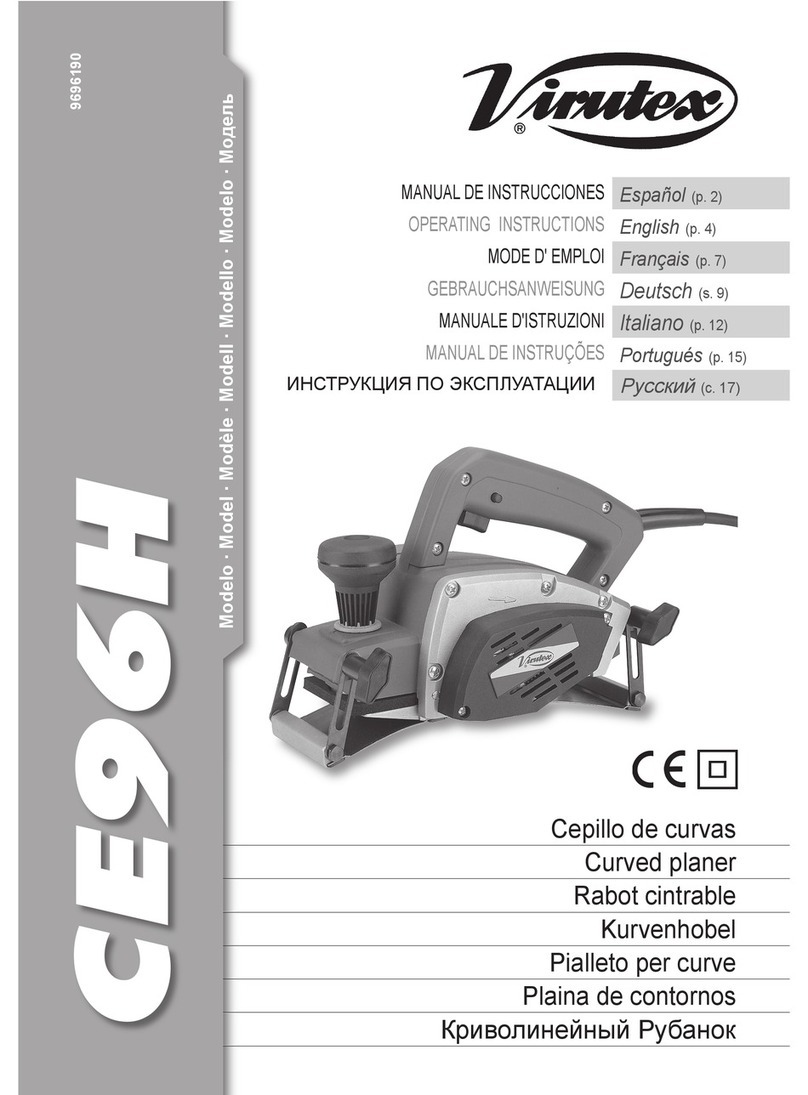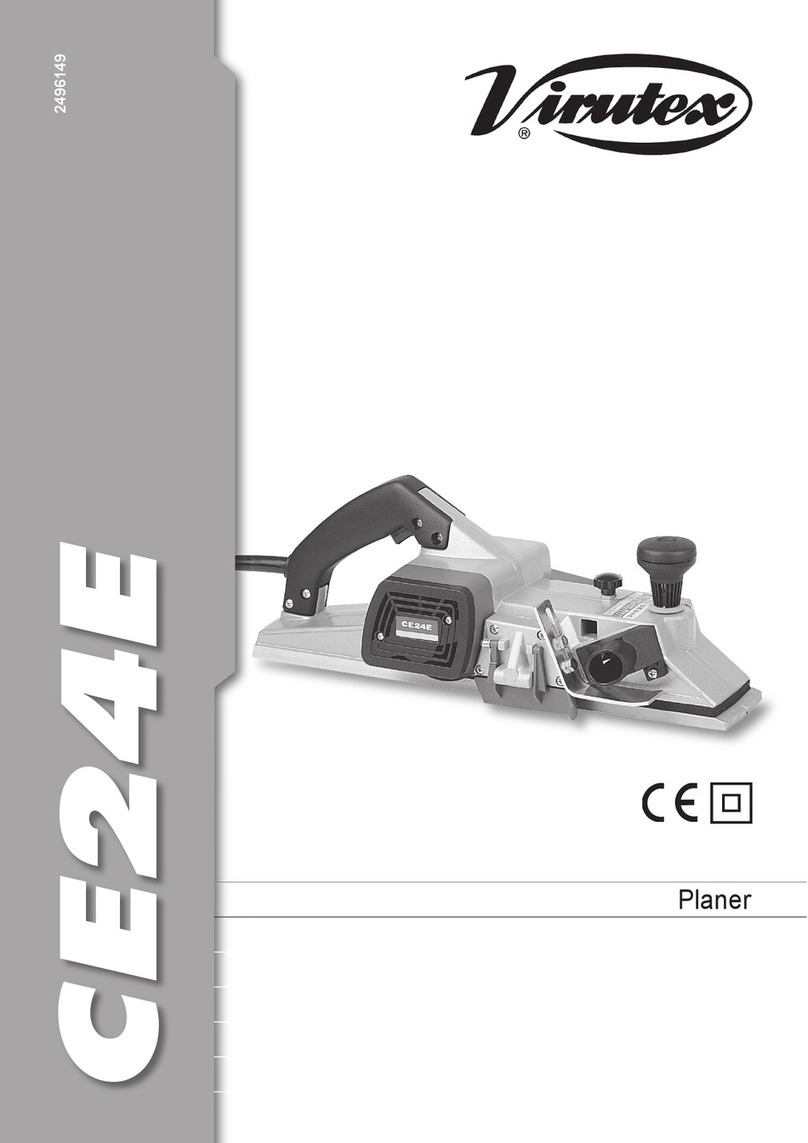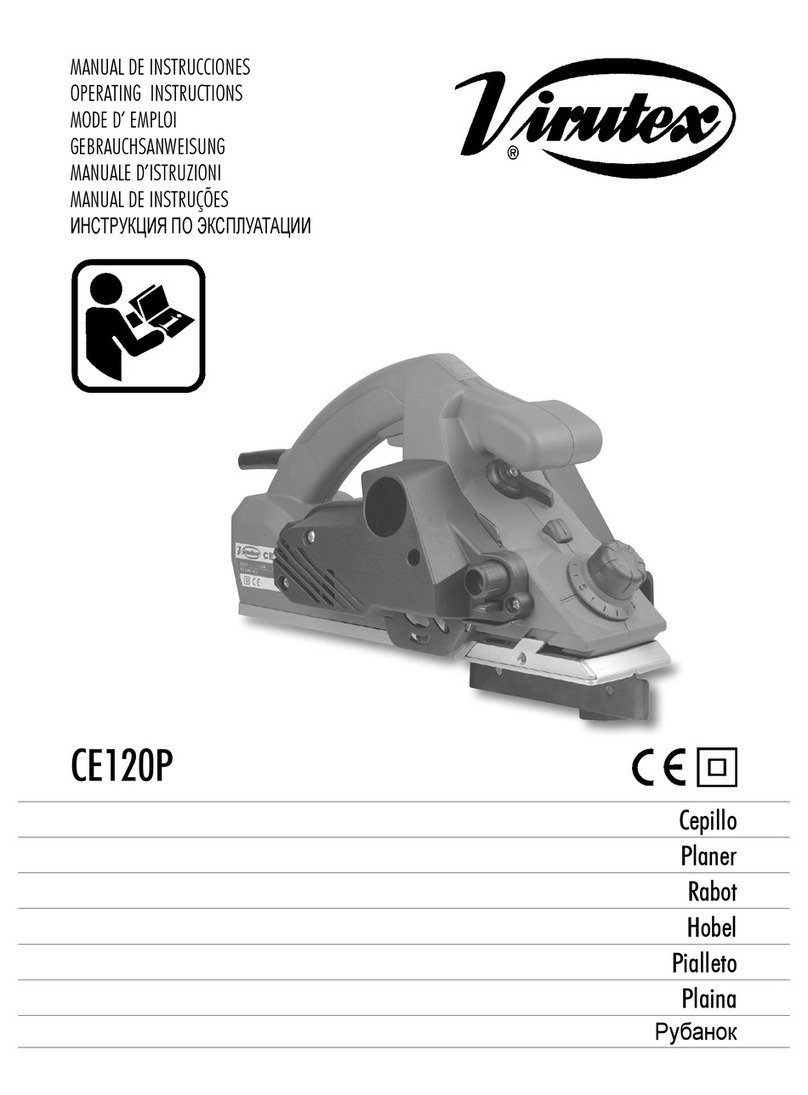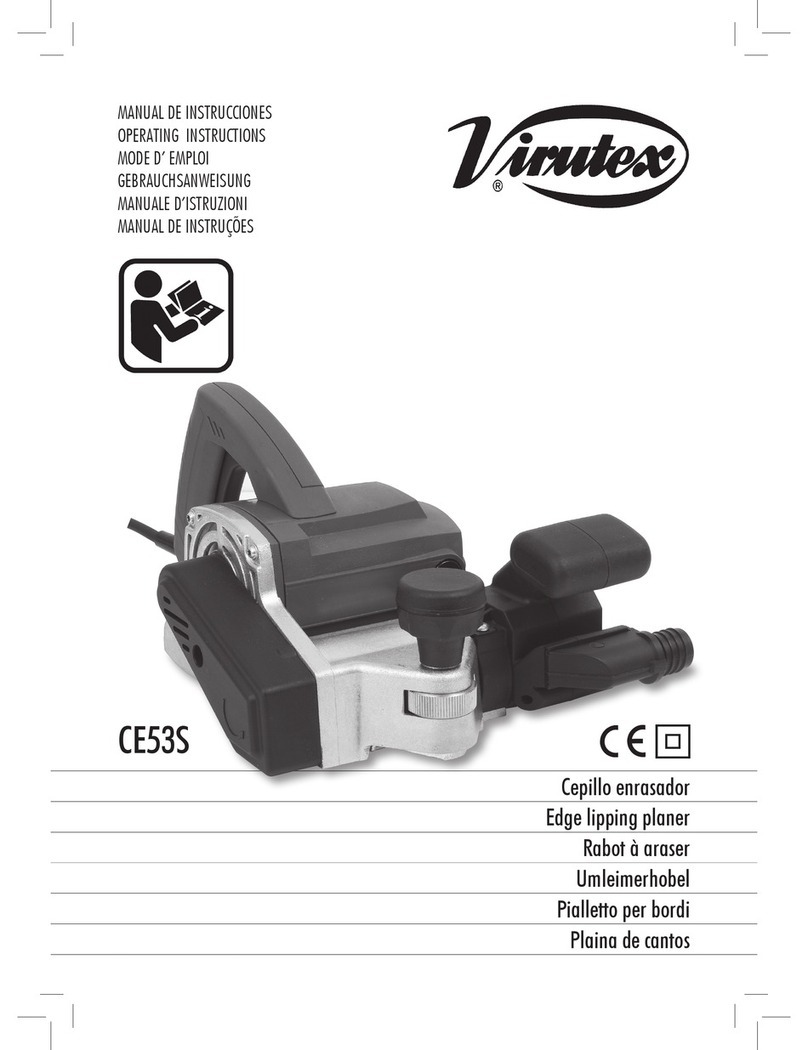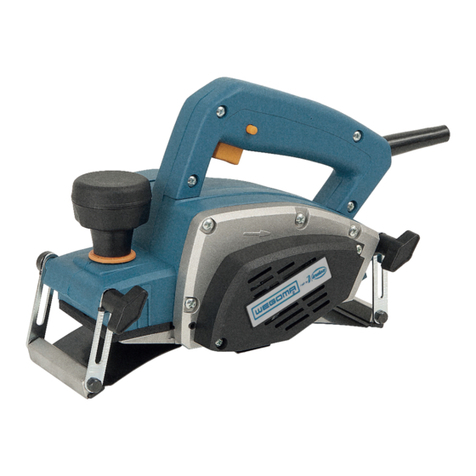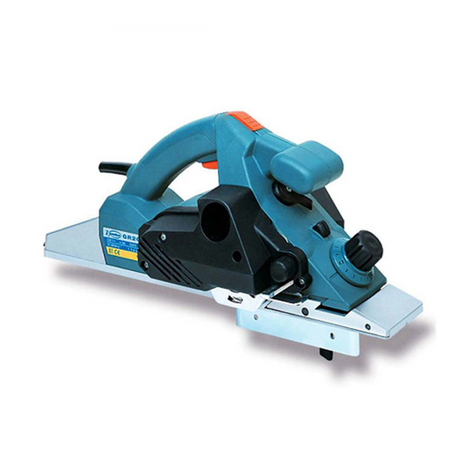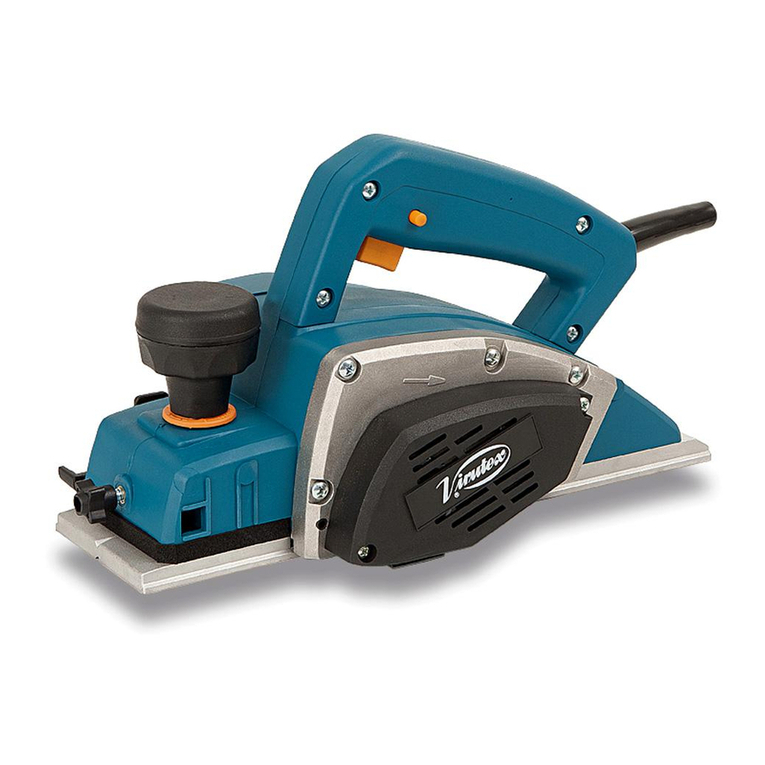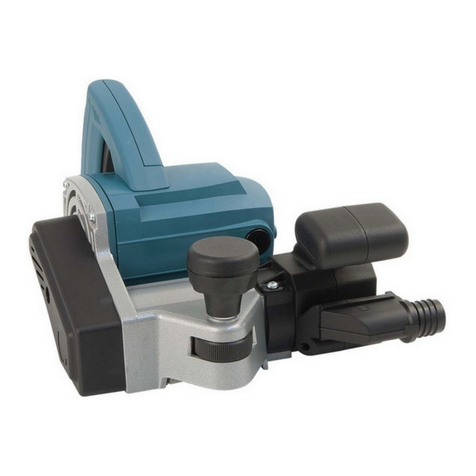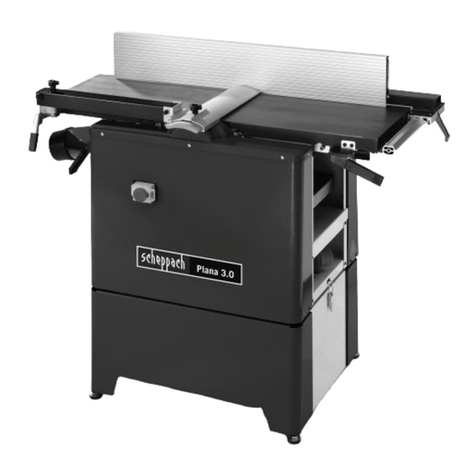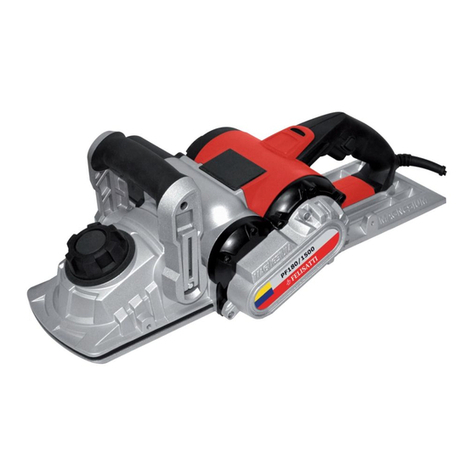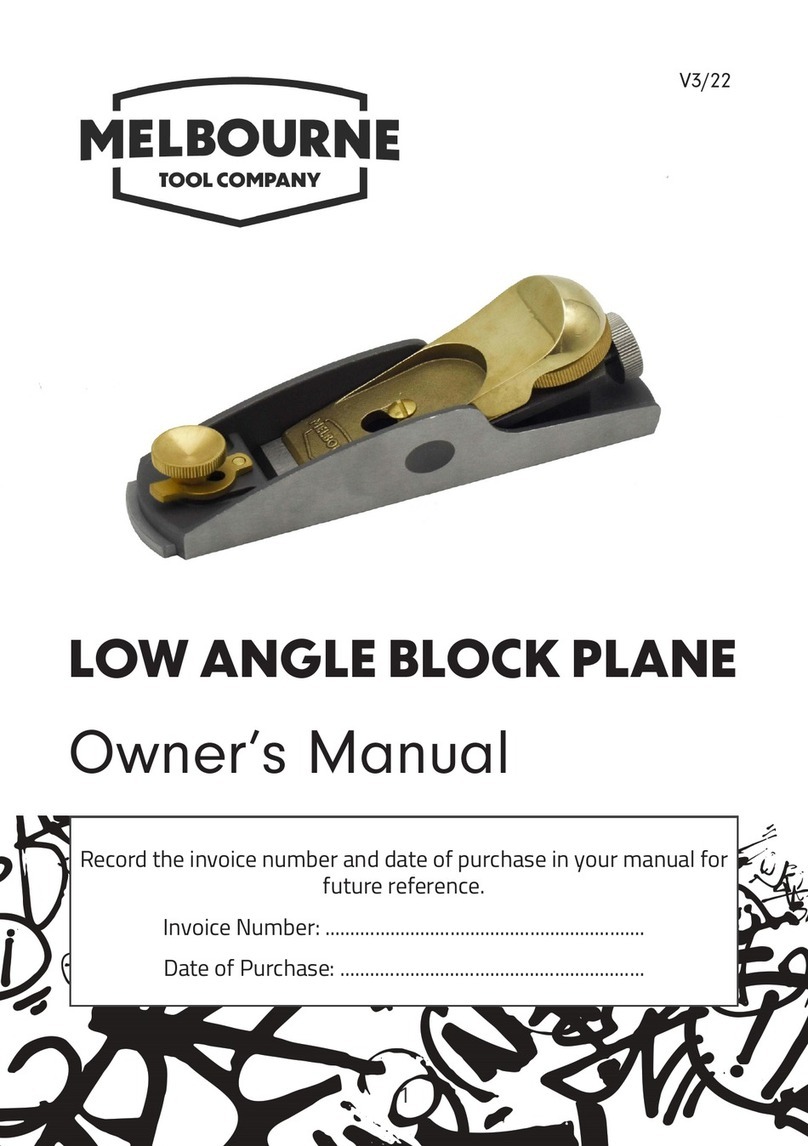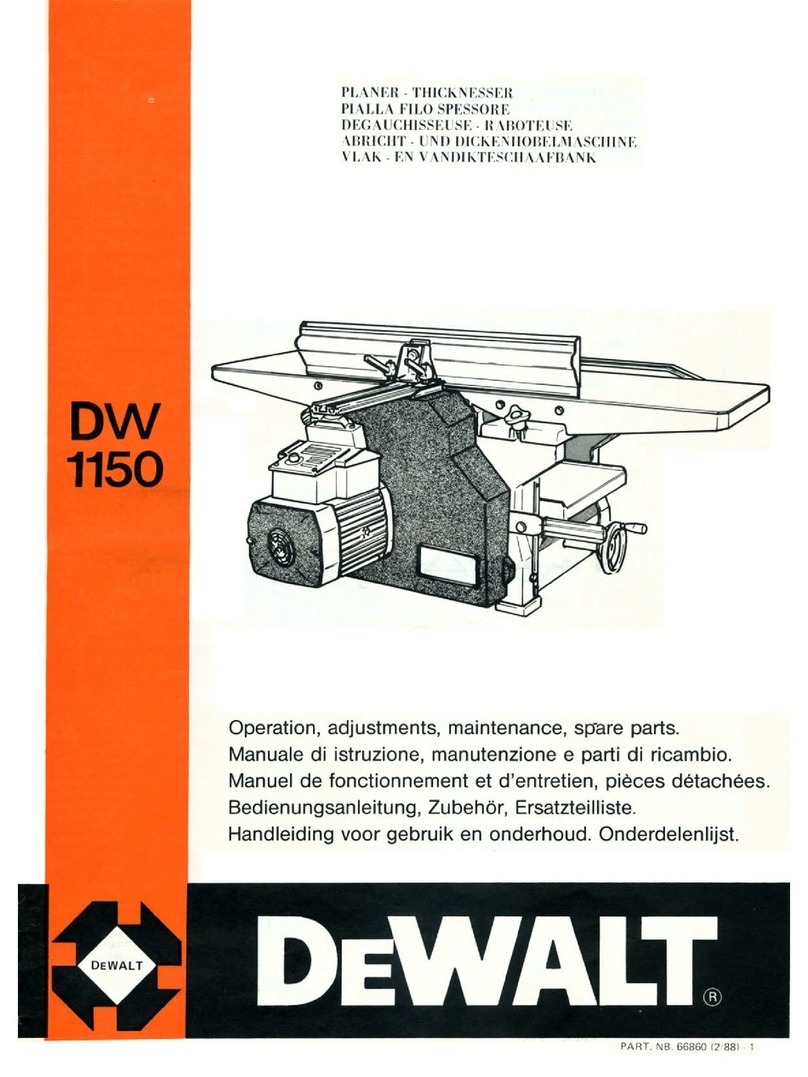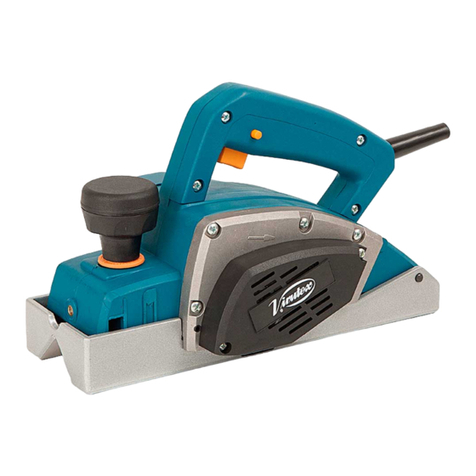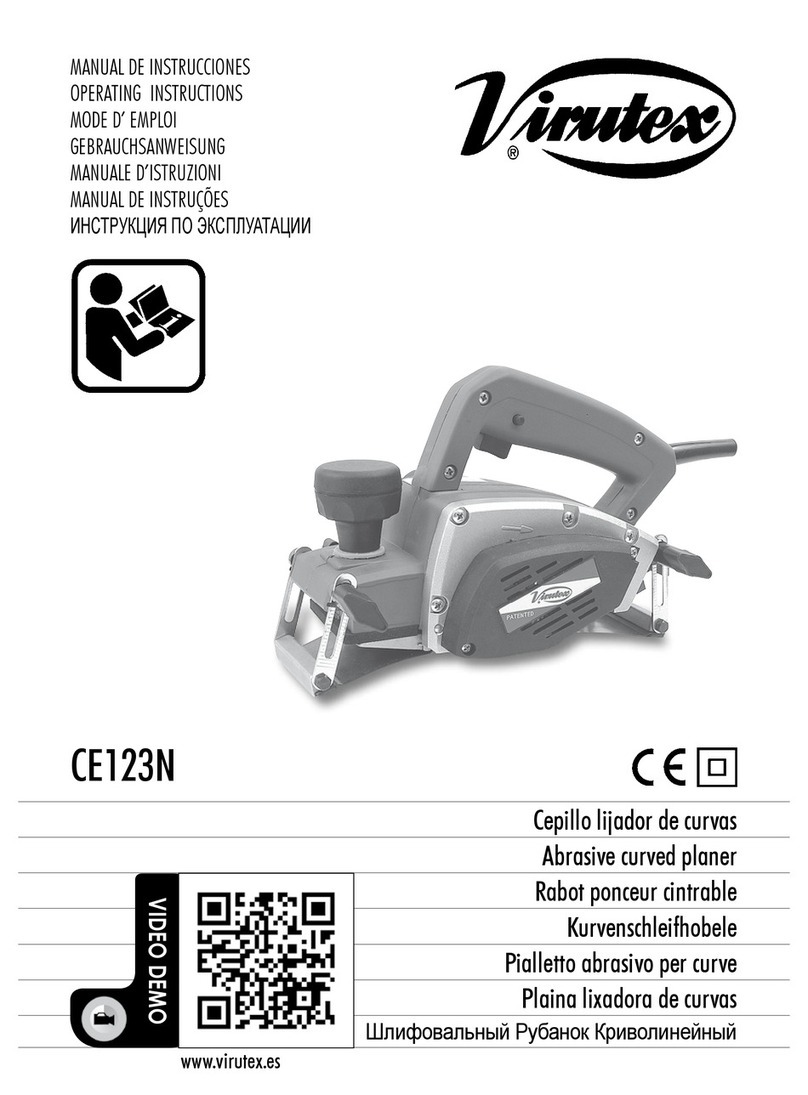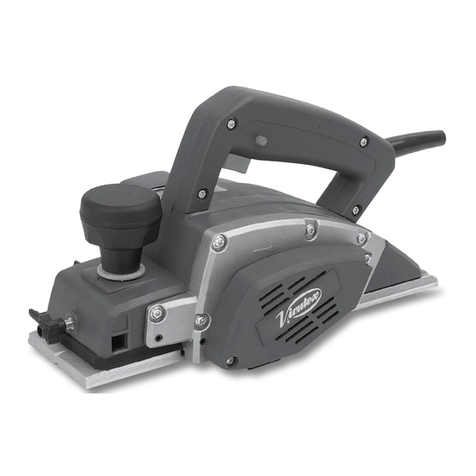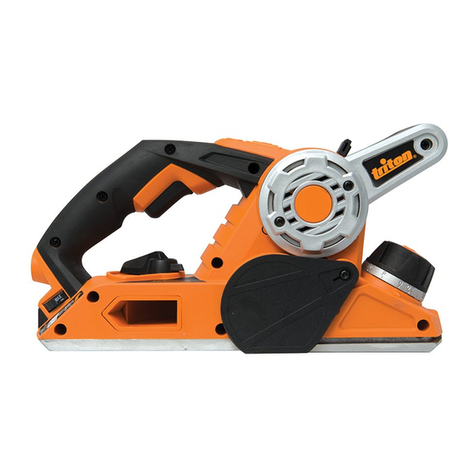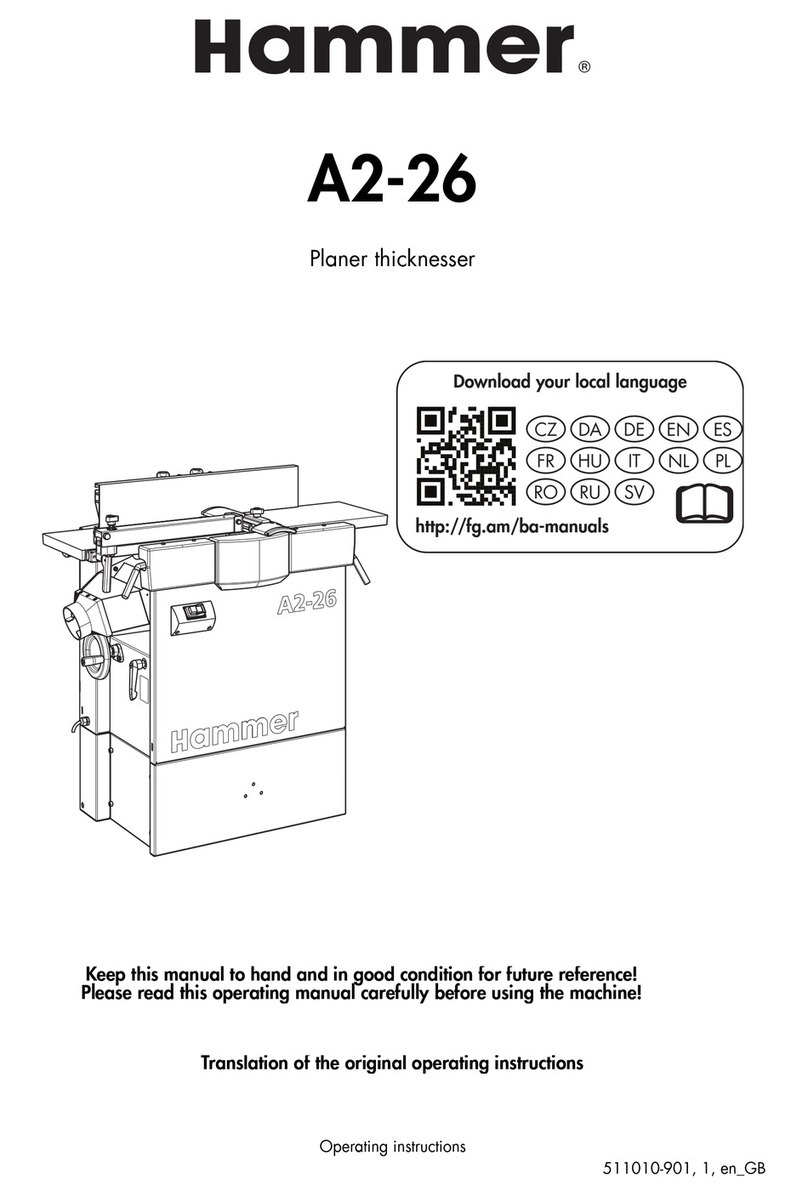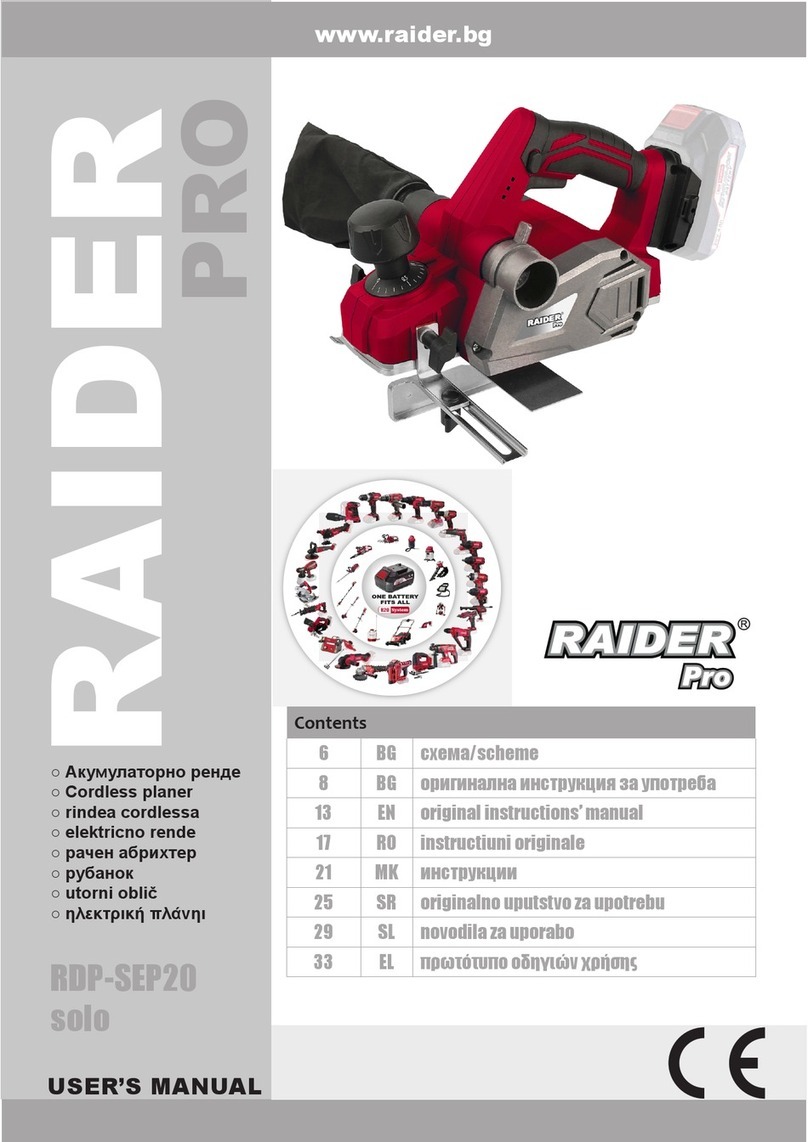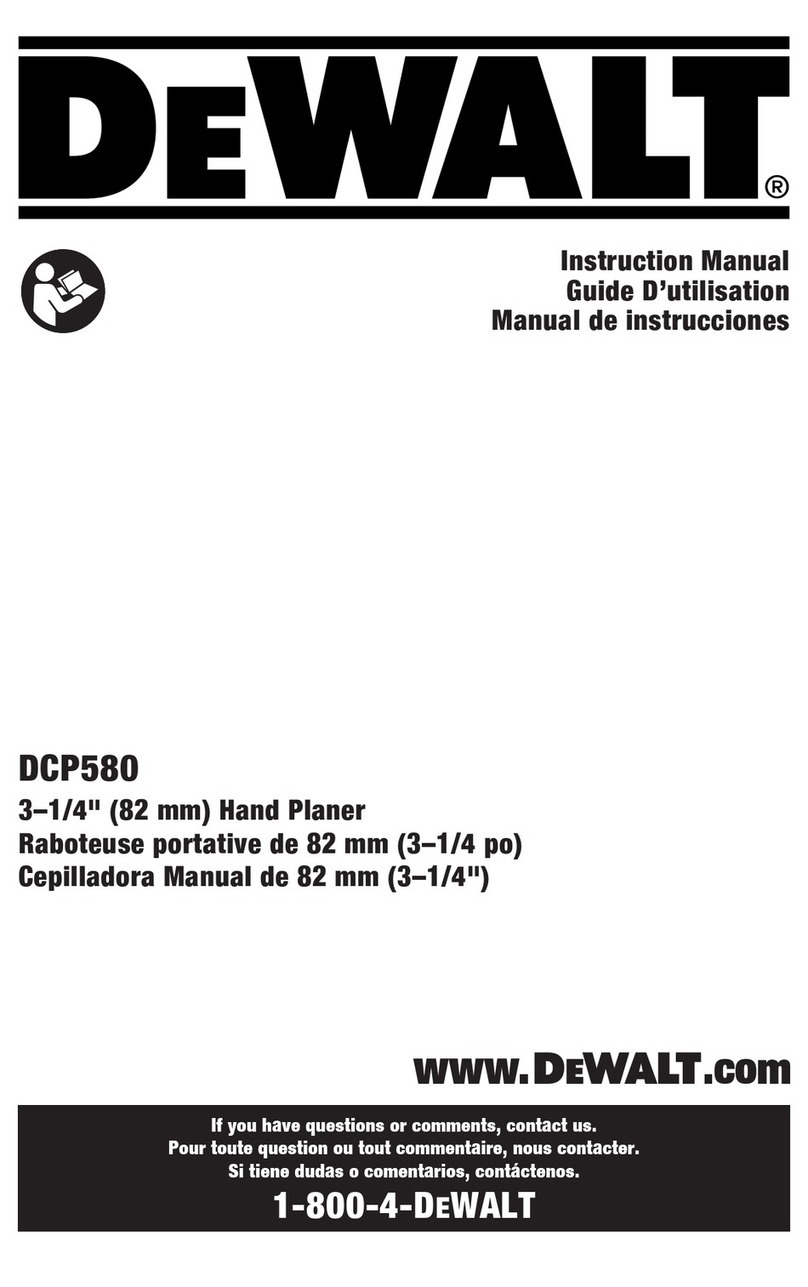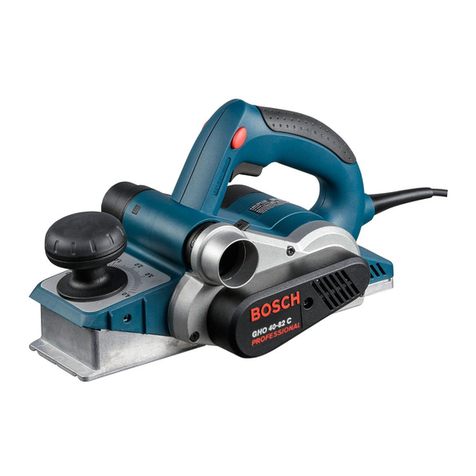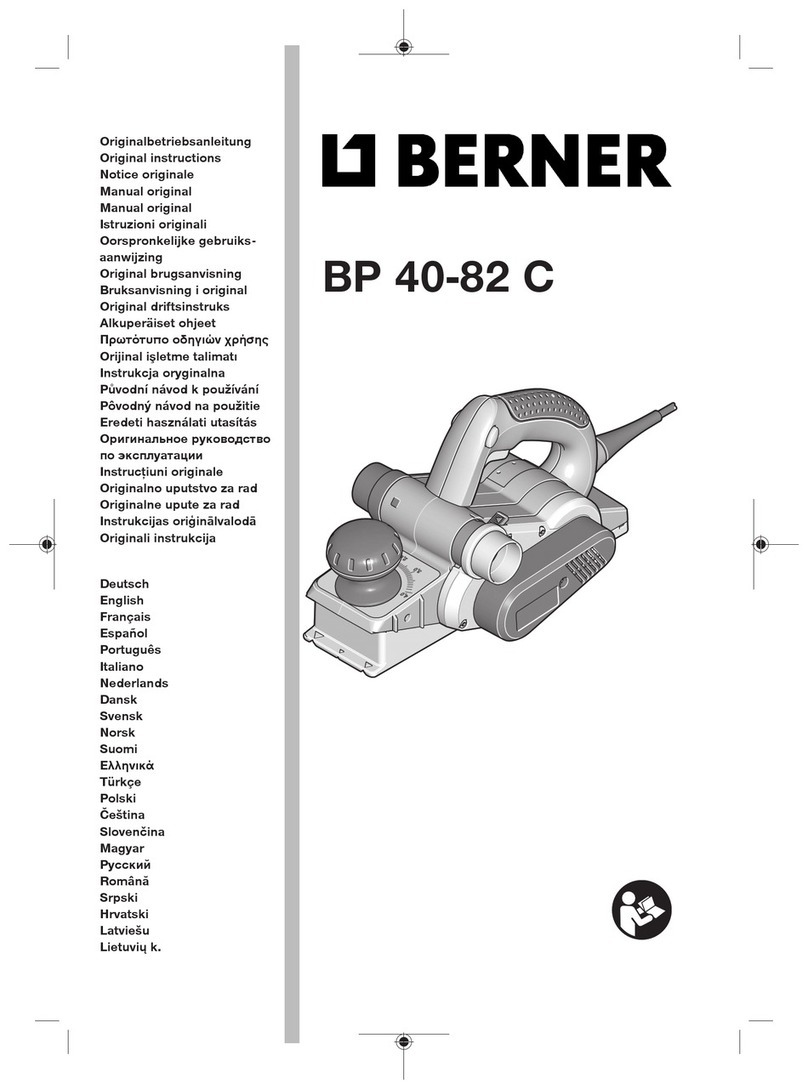6
carbon fibre reinforced with epoxy, vinyl and
polyester resins.
For maximum performance, work with the
machine without forcing it, which reduces its
speed and output.
The machine is equipped with a dust collector
connection which can be used for connection
to our AS182K, AS282K dust collector or any
industrial equivalent via the STANDARD DUST
COLLECTOR ATTACHMENT (ref. 6446073).
For assembling the dust collector connection,
remove the chips outlet guide A (Fig. 1) using
screws B and fit the dust collector connection
in its place.
6. STARTING AND STOPPING
THE MACHINE
The planer is equipped with an upwardly-enga-
ging safety button, which avoids the machine
from being started up accidentally.
To start up the machine, press down on the
safety button D while depressing the power
button E (Fig. 2).
7. ADJUSTMENTS
7.1 SANDING OF CONCAVE SURFACES
Approximation sanding
Trace the reference line R for approximation
sanding (Fig. 3).
Set the cutting depth to "0" using knob G (Fig.
3). Adjust the skid H and the base I (Fig. 3) to a
radius somewhat less than that which is going to
be worked on, using knobs J and K (Fig. 3). Set
the skid to the desired cutting depth using knob
G (Fig. 3). Proceed to sand down irregularities,
using the skid as the supporting surface to begin
the cut, working successively on rough areas in
order to approach the reference line.
Finish sanding
In order to sand a constant thickness along the
length of a concave surface, or to give a conti-
nuous finishing pass, proceed as follows:
Set the pass depth to "0" using knob G (Fig.
4). Loosen knobs J and K that fasten the skid
Hand the base I (Fig. 4). Place the planer on the
surface to be sanded, pressing down on it so
that the skid H and the base I adapt to it, fixing
them in place using knobs J and K (Fig. 4).
Ensure the parallelism of the skid and the base
by checking that the same level is indicated on
the guide marker L on the struts M (Fig. 4) on
both sides of the planer. Lastly, set the desired
cutting depth using knob G (Fig. 4).
To sand the piece, usetheskidasthesupporting
surface to begin the cut, gradually shifting the
support to the entire base as you progress.
7.2 SANDING OF CONVEX SURFACES
Approximation sanding
Trace the reference line R for approximation
sanding (Fig. 5).
Loosen knob J, set the cutting depth to "0" using
the knob G and fix the skid in place with knob J
in the horizontal position (Fig. 5).
Place the planer on the piece to be sanded. Give
the base I (Fig. 5) a slightly greater radius than
that of the piece and fix it in place using knob K
(Fig. 5). Adjust the desired cutting depth using
the knob G (Fig. 5).
To sand irregularities by areas, use either the
skid or the base as the support surface to
begin sanding, depending on which is more
convenient, and once on the piece the position
of the planer should be shifted slightly so that
the support is on the ends nearest the sanding
roller as depicted in (Fig. 5).
Finish sanding
In order to sand a constant thickness along the
length of a convex surface, or to give a continuo-
us finishing pass, proceed as follows:
Set the pass depth to "0" using knob G (Fig. 6).
Loosen knobs J and K that fasten the skid H
and the base I (Fig. 6). Place the planer on the
surface to be sanded, adapting the skid H and
the base I to it and fixing them in place using
knobs J and K, respectively (Fig. 6). Ensure the
parallelism of the skid and the base by checking
that the same level is indicated on the guide
marker L on the struts M (Fig. 6) on both sides
of the planer. Adjust the desired cutting depth
using the knob G (Fig. 6).
To sand the piece, usetheskidasthesupporting
surface to begin the cut, gradually shifting the
support to the entire base as you progress.
7.3 SANDING OF FLAT SURFACES
Loosen knobs J and K (Fig. 7) in order to
release the front skid and the base from the
curvature struts.
Set the skid H to "0" using knob G (Fig. 7).
Place the planer on a flat surface and press
down on the rear part of the base I, so that it
